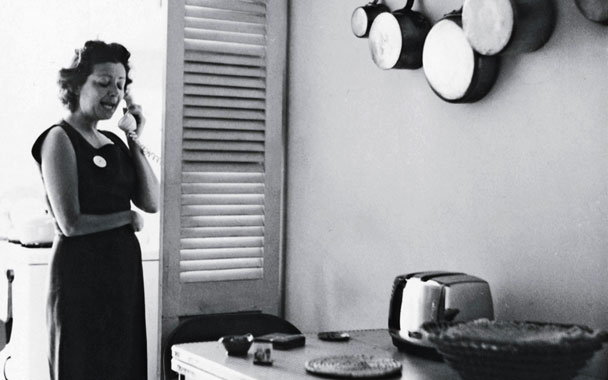Marriage to Victor Hazan, a New Yorker, meant straddling the Old World and the New. In 1969, Marcella began teaching Italian-cooking classes out of their small apartment kitchen in midtown Manhattan. Her first American students were six ladies she met while taking a course in Chinese cooking. “What do you eat at home?” they wondered, and so Marcella introduced them to lamb kidneys, squid, rabbit, and fish with the head on. After a year, it was time to recruit more students.
Victor recalled having seen a list of cooking schools come out in The New York Times food section toward the end of the summer. “I’ll write to them,” he said, “and perhaps they’ll add your name to the list.” Shortly thereafter, we received a letter from the Times. They were sorry, but the list had already been set and it was too late to include my classes in it. “That’s that!” I said. My new career had been a short one, and I started to look around to see how I could fill my time.
Two or three weeks later, I had a telephone call from a stranger. I was then—and to a degree, I am today—uncomfortable speaking English over the telephone. On the phone, a foreign language sounds even more foreign. It was a man from the Times. He wanted to come over and interview me about my cooking class.
“When would you like to come?” I asked. “How about Wednesday?” he said. “That’s fine,” I said. “What time?”
“Twelve-thirty.”
“Oh, at twelve-thirty my husband and I are having lunch.”
“Well, then, how about Thursday?”
“That’s fine,” I said. “What time?”
“Twelve-thirty.”
“But my husband comes home for lunch every day at twelve-thirty. If you really want to come at that time, come for lunch.”
He said he did not usually accept lunch invitations, but he was intrigued to hear that Victor would be there, and he accepted.
“Anything new this morning?” Victor asked at lunch. I told him about the call from the Times. “Who was it?” he asked. “Someone named Crec, Greg, I didn’t catch the name.” I have never been a good catcher of names. “Could it have been Craig Claiborne?” “That’s it!” I said. “You know who he is,” he said. “Don’t you remember that you always read his columns in the food section of the Times? He is the most famous food writer in America.”
I decided to serve Claiborne a complete Italian meal—appetizer, first course, second course, salad, dessert. For the appetizer, I made carciofi alla romana, artichokes served upside down with their stems pointing up, as I had learned to do in Rome. My first course was one we used to make often at home in Cesenatico, tortelloni di bieta e ricotta, hand-rolled pasta shaped into tortelloni and stuffed with Swiss chard and ricotta. The second course was rollatini di vitello, veal rolls stuffed with pancetta and parmesan cheese, cooked in butter and tomatoes, and sauced with a few drops of their pan juices reduced with white wine. The salad was raw finocchio sliced very thin, seasoned with salt, olive oil, and black pepper. It was too much food to end in a sweet dessert, so I prepared one of my favorite fruit bowls, arance marinate, peeled, sliced oranges marinated with a little bit of sugar and served cold. It was a lovely meal. Nearly 40 years have passed, but I don’t think I can improve on it.



 Pinterest
Pinterest






